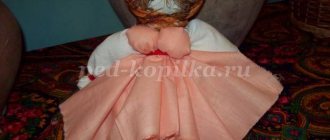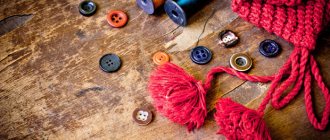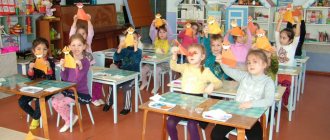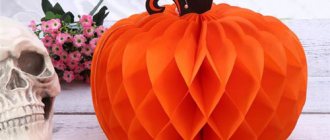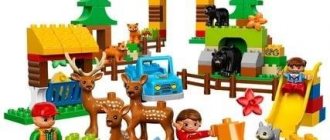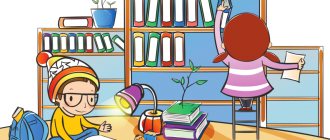Crafts from paper rosettes
Rosettes are the molds in which cupcakes are sold. They can be found in most retail or specialty food stores.
If you can’t find the right color, then you shouldn’t quit this activity ahead of time, since this material can be painted well without losing its main characteristics of shape.
Owl
On a dark background you need to glue the first rosette, slightly unfolded - the body. Next the head is glued on. For this, you also need to stretch the corrugated part and cut out a small bow on top to make ears.
The wings will be made from rosettes folded in half, and the belly and eyes will be made from small or cut off ones. To finish, you need to use felt-tip pens to draw in the feathers, beak, pupils, and paws.
Clown
Not all crafts in the older group bring moms and dads a lot of trouble. Sometimes it’s enough to print out a drawing from the Internet and give the child some thread.
- Print or draw a clown face;
- Glue the drawing onto a sheet of thick cardboard;
- Make holes in the top of the head using a hole punch or awl;
- Invite your child to make a clown's hair using pieces of multi-colored yarn. Pieces of yarn need to be threaded through the holes and tied with a knot.
Volumetric daisies
Cut 6-10 narrow strips from white office paper. The length can be equal to the length of an A4 sheet:
- Fold the strip in half;
- Apply glue to only a small area in the center of the strip;
- Glue the strip to the base;
- Bend the second sheet, coat it with glue, and glue it perpendicular to the first;
- Repeat with the remaining strips;
- Take the edge of the last glued strip, bend it towards the center, forming a loop, glue;
- Repeat with the other end of the strip;
- Fold and glue each strip to the center;
- Glue a circle of yellow paper to the attachment point - the core of the flower.
The thinner the strips of paper, the more openwork the flower will turn out.
a lion
The sleeve becomes the body, and the head can be made from a thinner sleeve or specially rolled cardboard.
Glue a paper mane to the side closer to the edge, and a head to it. The ears are also made from oval paper, which is folded in half for a characteristic shape.
The tail and paws are cut out and glued onto the “tummy”.
Pasta art
Pasta is often used for children's crafts in the older group. Different types of pasta can be used for different crafts.
For the “sun” applique, you can use round pasta that looks like wheels, feather pasta is suitable for creating a Christmas tree, and pasta horns are suitable for decorating the curly fur of a sheep. Raw pasta should be glued onto a cardboard or paper base and, if desired, decorated.
Crafts from bushings
The senior group of kindergarten can diversify paper crafts with many other materials; this is typical for children of this age.
You can make various animals from toilet paper rolls or napkin rolls.
Stork
On the rough sketch, sketch out the outline of the bird. Turn the leaf over and seal it with double-sided tape, because large seeds are better attached to tape.
Just don’t peel off the protective film from the tape just yet; first you need to cut out the picture along the contour and glue it to the background.
We expose the tape and glue white plumage made from pumpkin seeds and black plumage from sunflower seeds onto it.
You can simply draw the beak and legs with a felt-tip pen, or you can pour semolina onto PVA and then paint it with gouache.
The nest can be made from branches, sushi sticks, dry grass, and pencil sawdust.
Goose
On the main sheet of paper that will serve as the background, sketch out the outlines of the bird to make it easier for the baby to navigate the space of the sheet.
It is better to use thick paper or cardboard, since regular office paper will begin to bend from the weight of the seeds.
The wing can be made from pumpkin seeds, the beak and legs from orange napkins, previously divided into small pieces and rolled into balls, and the plumage itself from medical cotton wool. The materials must be glued to the background using PVA glue.
Diagnostics of the results of labor activity in the senior group of preschool educational institutions
The diagnostic card helps the teacher evaluate the results of working with children and sum up the results for the six months. In addition, with the help of this document, the teacher systematizes information and determines what each child has achieved and what he cannot cope with.
The diagnostic card records all types of work activities of senior group students.
Table: example of a diagnostic card
| Author | Savina P.I. | ||
| Development indicators | Actions and tasks | Positive result (the child copes with the task) | Negative result (child fails to complete the task) |
| Motivation | Have a desire to participate in work activities | ||
| Gain the skill of taking a proactive approach to business | |||
| Views of adults' work | Desire to provide all possible assistance to adults | ||
| Attitude to work | Desire to learn about future professions | ||
| Respect for other people's work | |||
| Careful attitude towards the results of your work | |||
| The working process | Careful handling of materials | ||
| Use the most productive work methods | |||
| Finish what you started | |||
| Teamwork | Friendliness and ability to work in a team | ||
| Develop communication skills | |||
| Mandatory | Competently evaluate the results of work | ||
| Have the habit of taking orders responsibly | |||
| Labor in nature | Appreciate and respect nature and its gifts | ||
| Have basic plant care skills | |||
| Know how to plant seeds | |||
| Self-service | Be able to take care of your appearance | ||
| Correct your hairstyle and hair | |||
| Manual labor | Know how to glue cardboard and paper | ||
| Strengthen skills in working with scissors | |||
| Duty | Possess basic table setting skills | ||
| Develop independence | |||
| Household work | Know how to wash things | ||
| Making the bed after sleep | |||
Labor activity is the most important aspect of preschoolers’ education. Children develop the skills necessary for future life in society. The teacher should try to help and guide the child, and instill a love of work. The main thing is not to do all the work for the pupils and allow them to express themselves so that they can fully develop their abilities and potential.
